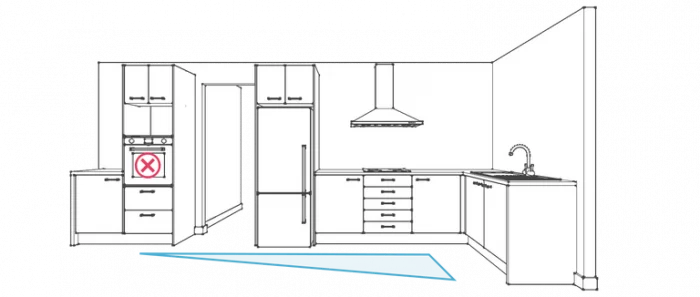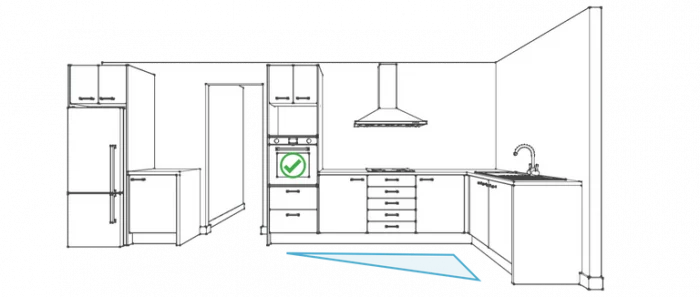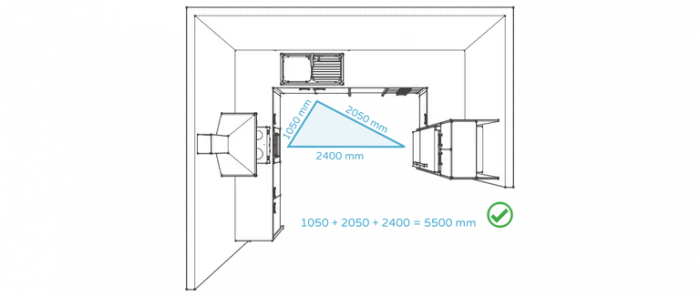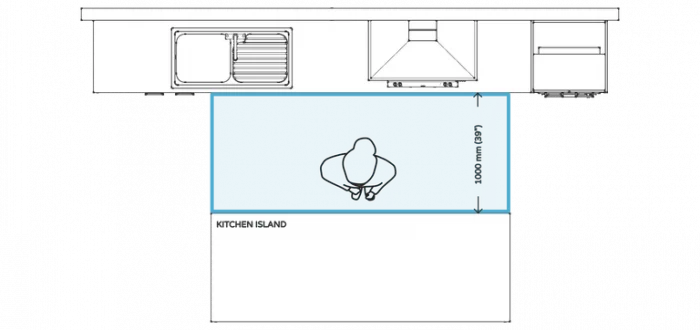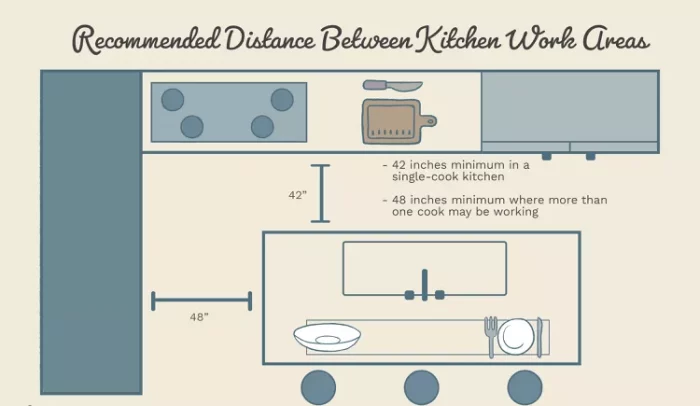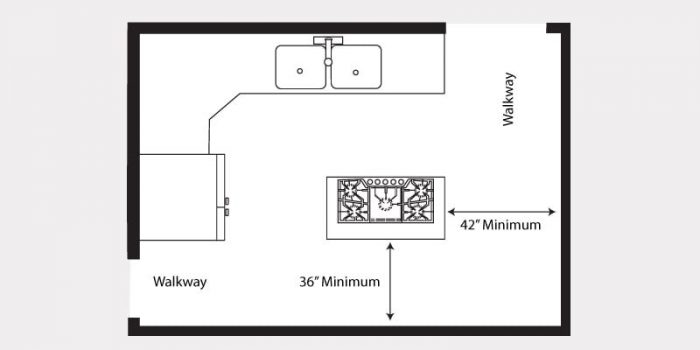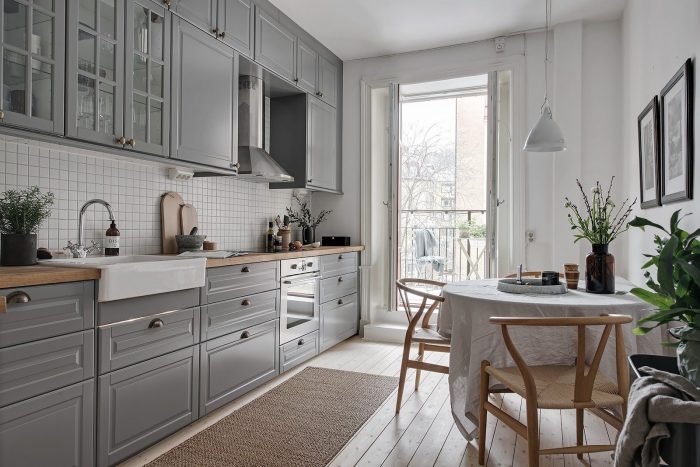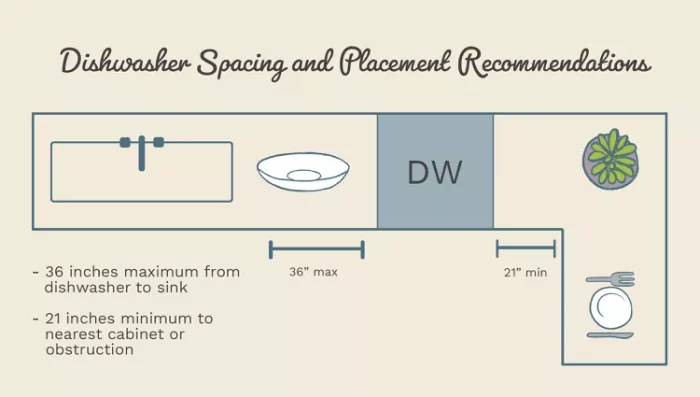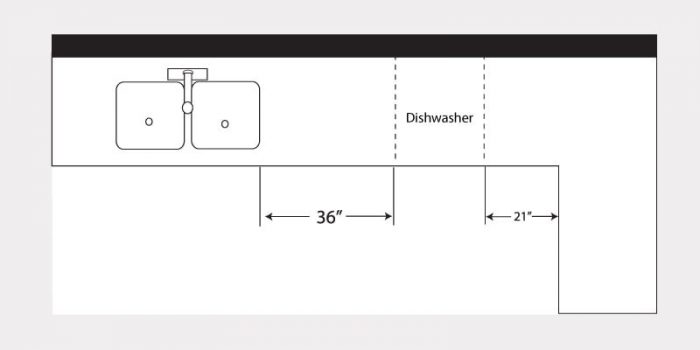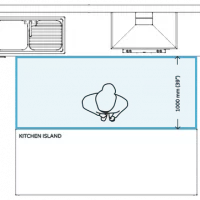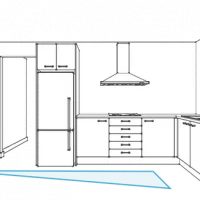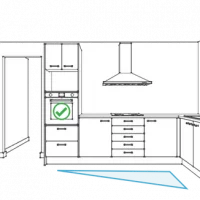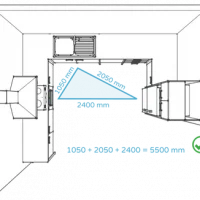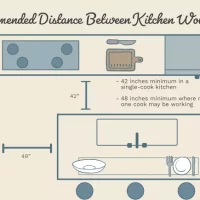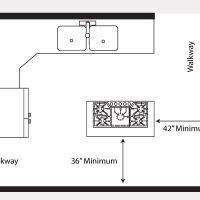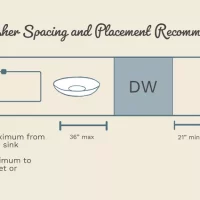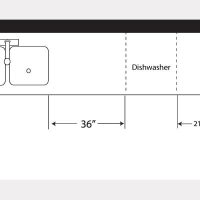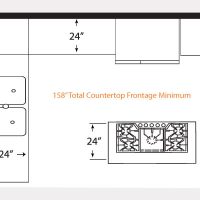Your kitchen is, without a doubt, the most valuable room in your house. It’s where you cook and where your loved ones mingle. Your kitchen space must be both aesthetically beautiful and practical. Unfortunately, poorly constructed kitchen interiors are a widespread problem in our houses, even in newly built ones.
It can be tempting to take complete creative control when designing the layout of your kitchen space, particularly concerning spacing and placement. However, there are certain restrictions. Distances between workstations, corridors, walkways, seats, dishwashers and countertops, and so on are all subject to these spatial constraints and regulations.
Kitchen Space Distance Rules
These ten fundamental kitchen space distance guidelines serve as a guide map for good kitchen design, covering everything from aesthetics to safety to general use. If your kitchen interior design fails any of these guidelines, you’re undoubtedly aware of the disadvantages of insufficient kitchen space design.
[table id=1 /]
1) Foot Traffic Crossing Kitchen Work Triangle
Your kitchen should not be the primary access point to the rest of your house, meaning no one should cross the kitchen work triangle on foot. The refrigerator is an exception.
In the picture above, you can see that the wall oven is to the left of the door to the hallway and that foot traffic crosses the work triangle. Because this is the main entrance to the rest of the house, it is critical to relocate the oven to a more secure location.
In the second figure, the wall oven is not a matter of safety as it has switched its position with the fridge.
Also read: How to Perfectly Choose Your Kitchen Lighting? Check These 7 Steps
2) Total Length Of Kitchen Work Triangle
The overall length of the kitchen work triangle, which is the distance between the stove, refrigerator, and sink, shouldn’t be more than 7000 mm (23 inches). The perfect work triangle length is between 4000 mm (13′) and 6000 mm (19′). You might want to have 2 or 3 different zones if you have a big kitchen.
3) Space Around a Kitchen Island
One of the most crucial components of planning a kitchen layout is selecting the proper size kitchen island. The kitchen space distance regulations will guide this to a significant extent. Experts advise providing at least 40 inches of space around your kitchen island or peninsula and 48 inches if you frequently have several cooks in the kitchen simultaneously.
Also Read: How to Make Your Small Spaces Seem Bigger with Lighting?
4) Space Between Kitchen Island and Counter
The space between the kitchen island and the counter is frequently controversial since homeowners wish to know if their kitchen is sufficient to accommodate an island. Considering kitchens can get busy with chefs and bystanders, it is critical to follow these spacing recommendations.
There are no obligatory specific regulations that you must follow when it comes to spacing. But many people suggest setting space aside for certain things. Because of this, there should be 42–48 inches of space between the kitchen counter and kitchen island, making it easy for people to move around in the kitchen.
Also Read: 12 Interior Design Trends We’re Presuming To Run The Show In 2023
5) Kitchen Stove Spacing
As a standard guideline, the stove should be 42 inches away from the island, making it possible to open the door while still having enough space to move around the kitchen. Consider an oven with a sliding door to enhance space and safety. Furthermore, place your oven at eye level to eliminate bending and create extra space.
6) Kitchen Walkways
To begin, what exactly is a walkway? The National Kitchen & Bath Association (NKBA) separates the work aisle, where the cook stands while cooking or cleaning up, and a walkway, which is just a pathway for others to walk through the kitchen.
The minimum area required for a work aisle is significantly greater than that needed for a walkway since a cook must be able to spin around, lean over to reach items in lower cabinets, and remove hot pans from the oven. Given this, experts recommend that a walkway be at least 36 inches wide. However, if two walkways are parallel to one another, one of the walkways must be at least 42 inches wide.
7) Space Above Kitchen Cabinets
There are no municipal codes that prescribe an upper cabinet height. However, the average among many kitchen interior designers is 54 inches from the floor to the bottom corner of the cabinet, leaving a space of 18 inches between the countertops and the upper cabinets.
8) Space Behind the Corner Kitchen Sink
A sink no larger than 29 inches will fit in a 42-inch corner cabinet. In most cases, the sink is three inches from the cabinet’s front frame. If you insist on a more oversized sink, you must position it back toward the front edge.
9) Dishwasher Placement and Spacing
Knowing the ideal for installing your dishwasher is stress-free. Install your dishwasher near the sink and leave space on either side of the front door as it swings open. Locate the nearest end of the primary dishwasher within 36 inches of the nearest edge of a cleanup/prep sink. Allow at least 21 inches of standing space between the dishwasher’s edge and the countertop front, appliances, or cabinets situated at a right angle to the dishwasher.
10) Kitchen Countertop Space
A kitchen countertop is where you can place or drop anything from the sink, refrigerator, cooking surface, and oven service areas. For example, if you have no adjacent landing space for an oven, the cook may be obliged to place a hot pan in a nearby but dangerous location, such as on top of the fridge or the floor.
Countertop space is essential for a well-designed kitchen interior. If you want to use a lot of tiny countertop equipment, such as a microwave, toaster, or coffee maker, allow for even more countertop space than recommended. When it comes to mastering your countertop’s kitchen space, you need 158 inches of countertop frontage, 24 inches wide, and at least 15 inches of clearance above to fulfill all purposes.
- ©acnnhome.com
- ©renomart.com
- Foot traffic crosses the work triangle ©renomart.com
- The wall oven in a safer position ©renomart.com
- ©renomart.com
- ©The Spruce / Caitlin Rogers
- ©ariyanertebat.com
- ©Crddesignbuild.com
- ©kvartblog.ru
- ©therecipeproject.com
- ©The Spruce / Caitlin Rogers
- ©Crddesignbuild.com
- ©Crddesignbuild.com



